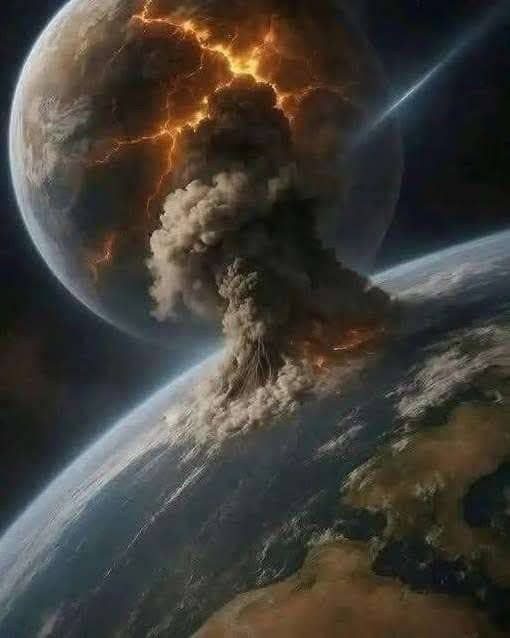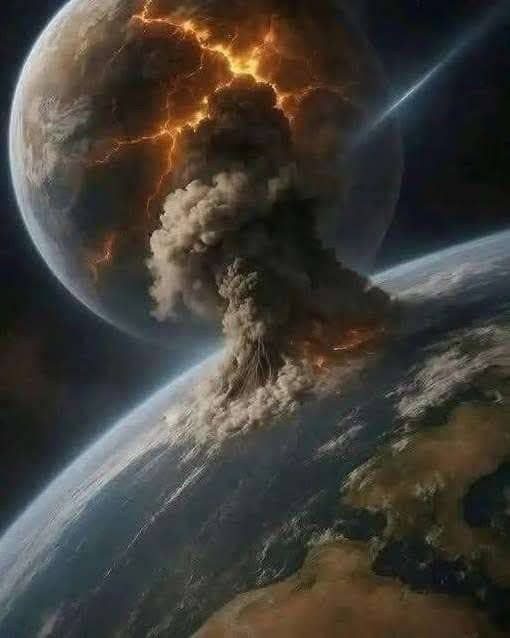NASA’s Center for Near-Earth Object Studies (CNEOS) has confirmed the detection of a massive asteroid, officially designated 52768 (1998 OR2), which will make a close approach to Earth this June. Despite headlines sparking fear, scientists stress there is no realistic threat of collision, though the asteroid’s enormous size highlights why monitoring such objects remains critically important.
The asteroid is estimated to measure between 1.5 and 4 kilometers in diameter—making it one of the largest space rocks to come near Earth in recent decades. To put that into perspective, the asteroid that caused the catastrophic Chicxulub impact 66 million years ago, widely believed to have wiped out the dinosaurs, was around 10 kilometers across. While 1998 OR2 is significantly smaller, an object of this magnitude could still cause devastating global consequences if it were ever to hit Earth.

Currently, it is traveling through space at an astonishing speed of 8.7 kilometers per second (nearly 19,500 miles per hour). On June 2, 2025, it will make its closest approach to Earth. According to NASA’s calculations, the asteroid will remain at a safe distance, far beyond the range of immediate concern. Experts emphasize that its trajectory will place it at a distance greater than the gap between Earth and the Moon, meaning it poses no imminent danger to our planet.
For comparison, the infamous Chelyabinsk meteor that exploded over Siberia in 2013 was only about 15 meters wide and 17 meters long. That relatively small asteroid injured around 1,500 people and caused widespread property damage when its shockwave shattered windows and rattled buildings. By contrast, 1998 OR2 is hundreds of times larger, and the damage it could cause if it struck Earth would be almost unimaginable. Fortunately, NASA assures the world that such a scenario is extremely unlikely.
Still, events like this tend to capture the public’s imagination—and for good reason. Humanity has long feared cosmic threats, from the Tunguska event of 1908, which flattened more than 2,000 square kilometers of Siberian forest, to Hollywood depictions of asteroid impacts in movies like Armageddon and Deep Impact. The reality, though, is more nuanced. While asteroids of this size are rare, the potential consequences make early detection and tracking an absolute priority for planetary defense.
NASA’s Planetary Defense Coordination Office (PDCO), which oversees the monitoring of near-Earth objects (NEOs), uses advanced telescopes and computer models to track thousands of asteroids each year. Their goal is not just to predict close approaches, but also to map potential future trajectories decades in advance. In the case of 1998 OR2, scientists have been following its path since its discovery over two decades ago, which allows them to calculate its orbit with remarkable precision.
Why does the public often worry despite reassurances from NASA? Part of the concern stems from the fact that space is unpredictable, and smaller asteroids—often undetected—enter Earth’s atmosphere regularly. Most burn up harmlessly, but some, like Chelyabinsk, slip through and remind us of the vulnerability of our planet. Larger asteroids, however, are easier to spot because of their size, and agencies worldwide maintain constant surveillance to prevent being caught off guard.
Interestingly, the news about 1998 OR2 comes just as a 23-year-old student was credited with discovering 17 new planets, one of which may be Earth-like in composition and orbit. Discoveries like these underscore how much we still have to learn about the cosmos, from the potential for life elsewhere to the ongoing risks posed by near-Earth objects. The duality of wonder and danger defines humanity’s relationship with space exploration: one moment we’re celebrating new worlds, the next we’re calculating the trajectory of a rock that could, in theory, end ours.
So, what would happen if an asteroid like 1998 OR2 were ever on a collision course with Earth? Scientists have been working on several possible defense strategies, ranging from kinetic impactors—essentially spacecraft designed to crash into an asteroid and knock it off course—to nuclear devices capable of breaking apart or redirecting a threat. In fact, NASA’s DART mission (Double Asteroid Redirection Test) in 2022 successfully altered the orbit of a small asteroid, proving that with enough time and preparation, planetary defense is possible.
For now, however, 1998 OR2 serves mainly as a reminder. Its flyby will be an extraordinary opportunity for astronomers to study the asteroid up close, refining their understanding of its size, shape, rotation, and composition. Telescopes around the world are expected to capture images and data during its approach, turning a potential threat into a valuable scientific event.
In summary, while the asteroid is massive and its capabilities frightening to imagine, there is no danger of impact this June. The closest it will come is still at a safe distance, posing no risk to life on Earth. But its approach is a clear signal that continued investment in asteroid detection and planetary defense is not just science fiction—it’s essential for our survival.
The universe will always throw surprises our way. This time, we can breathe easy. But the vigilance of NASA and other space agencies ensures that if a true threat ever emerges, we’ll see it coming—and hopefully, we’ll be ready.


